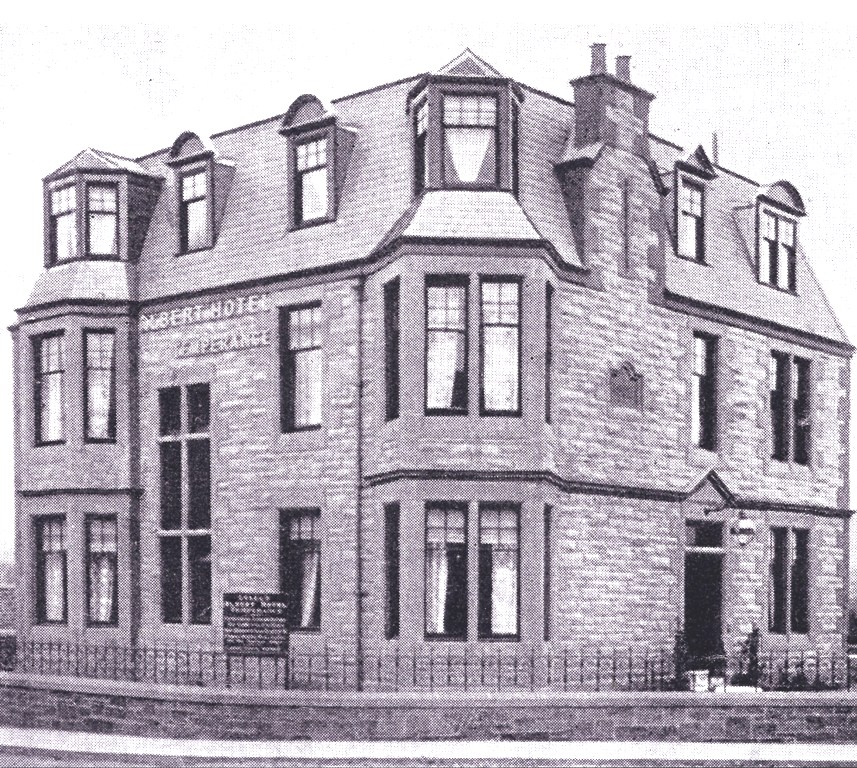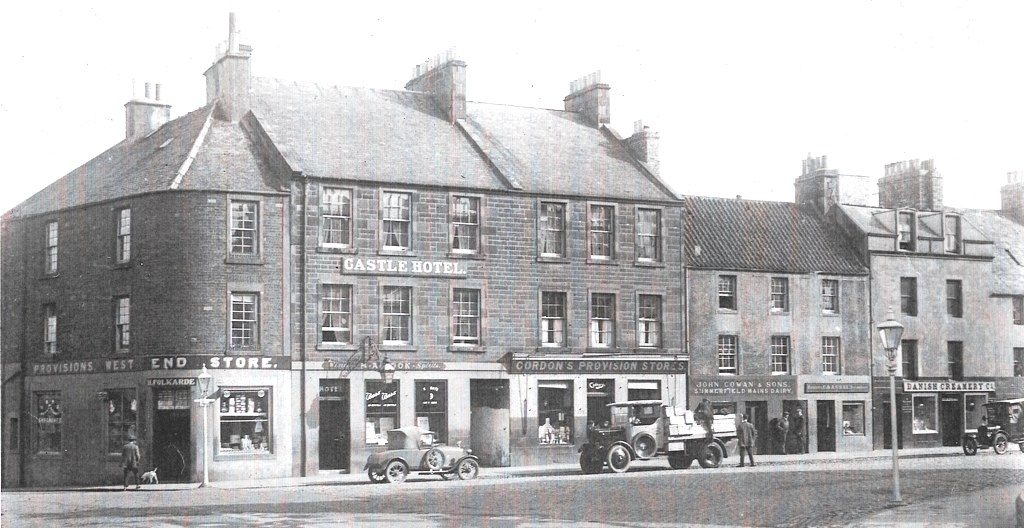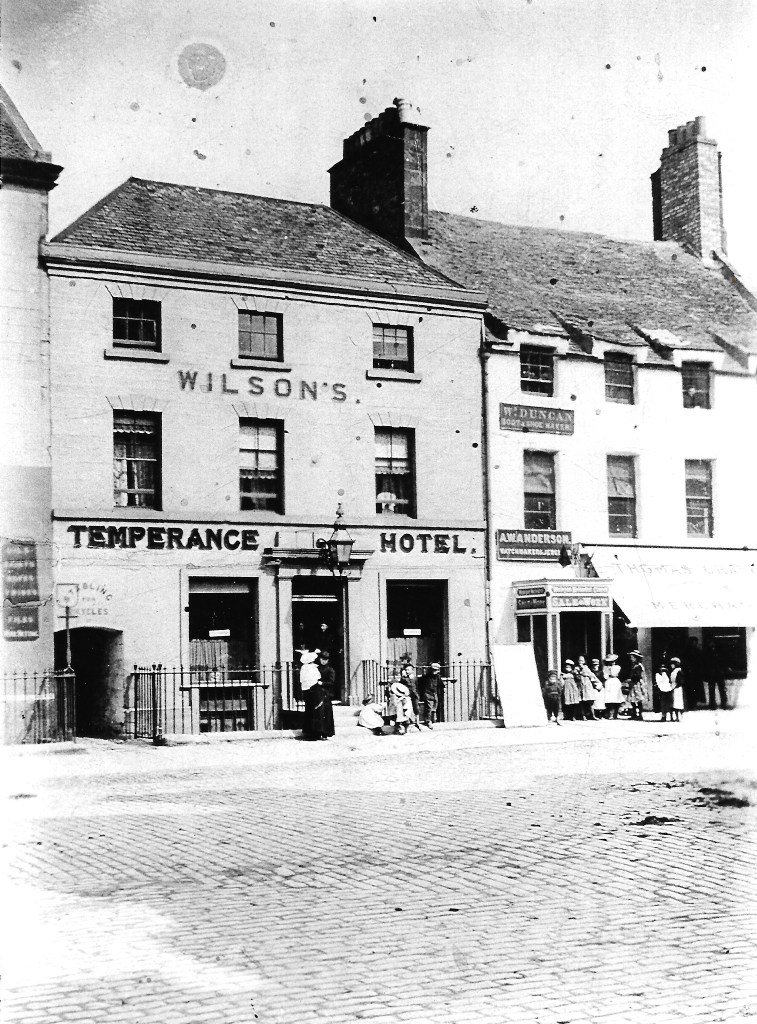We’re sticking with hotels for February – 2 Temperance hotels and 2 others.

Wilson’s Temperance Hotel was where the Bank of Scotland is now on the High Street. On the A1 History site (scroll down) – where the photo was first put online, it states “Wilson’s Temperance Hotel at 95 High Street occupied the site where the Bank of Scotland now stands. The next door flats, now demolished, have boards up advertising a business run from each house. The lower one is for A W Anderson, Watchmaker”.
The following – on the origins of temperance hotels in Scotland – is taken from a Glasgow University thesis.
“The most obvious avenue for enterprise was temperance hotels. Some dated from the anti-spirits era but more were from the Forbes MacKenzie Act era – counter-attractions to dubious ‘commercial hotels’ connected like brothels with after-hours drinking, spurred by expansion of the temperance press. They were regarded as “practical protests” against drinking and ‘safe places’ for the eternally vigilant. Their numbers rose sharply in mid Victorian Britain. Like coffee houses, they often provided reading rooms and ‘stock rooms’ for businessmen. They were used by itinerant dental surgeons, and as community facilities, as temperance halls were”.

The Albert Temperance Hotel was on Newhouse Terrace and later became the Goldenstones Hotel. It was built as a hotel in the early 20th century and is now the very successful Dunmuir Hotel, which notes on its website that “Work to create a hotel on this site began in 1898, when construction began on an elegant Victorian building in red sandstone. It had a grand oak staircase, ornate plasterwork and art nouveau fireplaces, and opened for business in 1902 as the Albert Temperance Hotel”.

The next hotel is The Castle which stands there today and has a long history in the town. It opened as the Castle Inn in 1867 and was later changed to the hotel name. The shops around it are interesting also. If you enlarge the photo, you will see Mr Folkarde’s West End Store on the corner. Mr Folkarde was the father of DDHS Secretary Pauline Smeed. Next to the hotel is Gordon’s Provision Stores, with the lorry being unloaded outside. Next to that is John Cowan and Sons, Summerfield Mains Dairy. Summerfield Mains was the farm which stood on the land where the new council houses were built in the late 1940s/early 1950s. The name of the next shop is unclear but after that, the Danish Creamery shop can be seen.

The final hotel is referred to here as the Edenholme Private Hotel. DDHS member Dr Pat Simpson has been researching this hotel and provides the following information: Built in the 1820s, the Eden Hotel was originally the family house of the Sked family, who ran the Dunbar Foundry next door. They built huge steam driven threshing machines. Part of the foundry walls can still be see today at St Pauli. Bought by retired Lt Col William Purves of the East India Company, in the 1850s, he named it Edenholme. It remained a 2019 private house until the 1930s, when it became a hotel under various names, such as Edenholm Guest House and Edenholm Private Hotel. In the late 1940s, it adopted the name Eden Hotel, finally reverting to a private residence in 2018.

You must be logged in to post a comment.